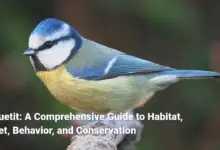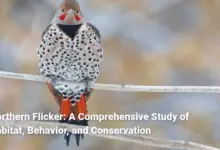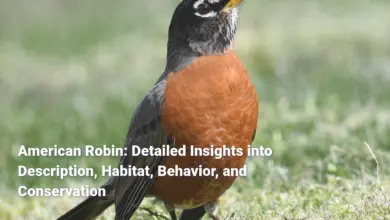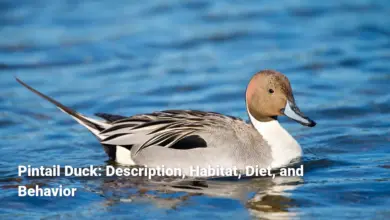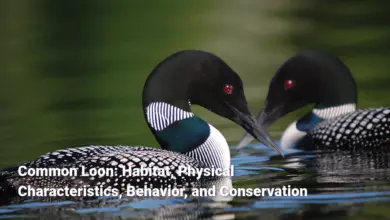Sea Eagles Unveiled: Types, Habitats, Hunting Behavior, and Conservation
An In-Depth Exploration of Sea Eagle Diversity, Their Ecosystems, and the Challenges They Face in Conservation Efforts.
The sea eagle, a majestic bird of prey known for its impressive size and keen hunting abilities, embodies grace combined with ferocity in the wild. Found across coastal and freshwater ecosystems worldwide, these raptors symbolize hope and resilience. The sheer power of sea eagles leaves a lasting impression on nature enthusiasts and casual observers alike. The term “sea eagle” covers a variety of species in the Haliaeetus genus, characterized by their strong, hooked beaks and large talons, specialized for catching fish making them apex predators in their environments.
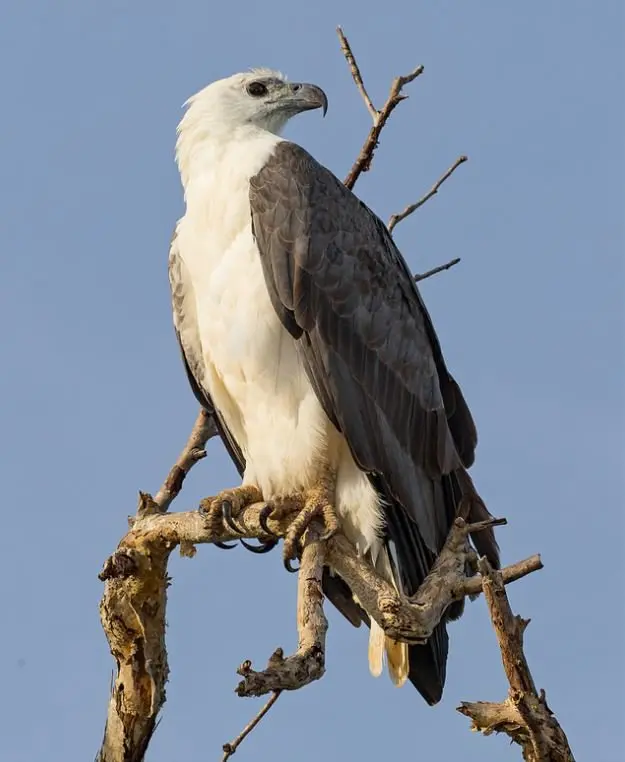
Among the most iconic species, the bald eagle proudly serves as the national bird of the United States, embodying freedom and strength. Other notable species, like the white-tailed eagle and Steller’s sea eagle, range across Europe and Asia, showcasing unique adaptations that enable them to thrive in diverse habitats. Beyond their ecological importance, sea eagles hold deep cultural significance in various societies, often representing power, wisdom, and the beauty of nature. The survival of these magnificent birds faces daunting challenges, including habitat loss and environmental changes, making them vital indicators of ecological health.
This article delves into the numerous aspects of sea eagles exploring their various species, habitats, behaviors, conservation status, and their profound cultural significance worldwide.
Types of Sea Eagles
When we think of sea eagles, we can’t help but marvel at the diversity within this group of magnificent birds. Each species tells a unique story of adaptation, strength, and survival, showcasing characteristics that distinguish them while still belonging to the same family. Just like the vibrant colors of a painter’s palette, sea eagles each bring their own flair to the natural canvas a mix of physical features, hunting styles, and habitats.
Here’s a closer look at some key species:
| Species | Description | Habitat | Diet |
|---|---|---|---|
| Bald Eagle | White head and tail, massive yellow bill | Near large bodies of freshwater and coastlines | Primarily fish |
| White-tailed Eagle | Distinctive white tail, large wings | Coastlines, rivers, and lakes | Fish, small mammals |
| Steller’s Sea Eagle | Dark brown plumage, massive size, yellow bill and feet | Northeastern Asian coastal areas | Salmon, waterfowl |
| Pallas’s Fish Eagle | Slender build, lighter plumage with a white collar | Central Asia, inland rivers, and lakes | Primarily fish |
| White-bellied Sea Eagle | Pale grey head, white belly, dark wings | Coastal mangroves, estuaries | Fish, small mammals |
The bald eagle, a symbol of freedom in the United States, contrasts sharply with the imposing catch and character of the Steller’s sea eagle, which reigns along the coasts of northeastern Asia. Each species occupies a unique ecological niche, showcasing nature’s ability to adapt and thrive. Their collective role as apex predators not only enriches biodiversity but emphasizes the importance of conservation efforts to ensure their future survival.
Bald Eagle
The bald eagle (Haliaeetus leucocephalus), with its striking appearance of a snow-white head and tail juxtaposed against a rich brown body, commands instant recognition. This iconic bird stands as a national symbol of strength and freedom for the United States. Adult bald eagles reach a wingspan of approximately 5.5 to 7.5 feet, making them impressive in size and presence.
Habitat: Bald eagles are primarily found in North America, residing near large bodies of open water, including rivers, lakes, and coastal regions. They prefer habitats rich in fish and large trees suitable for nesting, providing both safety and vantage points from which they can hunt.
Diet: While their primary source of sustenance involves fish, bald eagles are opportunistic feeders. Their diet may also include small mammals, birds, and carrion. This adaptability mirrors a natural scavenger’s instinct, revealing the eagle’s remarkable ability to thrive in varying environments.
Conservation Success: Once threatened by habitat loss and pesticide use, the bald eagle’s population has rebounded dramatically thanks to concerted conservation efforts, such as the banning of DDT and protective legislation. The achievement of removed status from the U.S. endangered species list serves as a shining testament to successful wildlife rehabilitation and conservation actions.
In summary, the bald eagle’s striking appearance, alongside its triumphant conservation story, enriches the awe and reverence that surrounds this remarkable bird and underlines the significance of protecting such iconic species.
White-tailed Eagle
The white-tailed eagle (Haliaeetus albicilla), renowned for its impressive wingspan that can exceed 8 feet, represents one of the largest raptors in the world. This species captivates observers with its distinctively beautiful white tail contrasting against its deep brown body.
Habitat: Predominantly found in Europe, parts of Asia, and occasionally in North Africa, white-tailed eagles favor coastal areas and large bodies of freshwater surrounded by extensive wetland habitats. Their choice of nesting sites reflects their reliance on abundant food sources, preferring areas abundant in fish populations.
Diet: This impressive eagle primarily feeds on fish, although it is also known to scavenge carrion and hunt waterfowl and small mammals. White-tailed eagles are not averse to stealing from other birds, showcasing their opportunistic nature. Such behavior emphasizes their role as both hunters and scavengers in their ecosystems.
Breeding: The breeding season typically unfolds between late winter and early spring, where pairs will mate for life. They begin constructing large, bulky nests, often placed high in trees or on cliffs for safety, typically laying 1 to 3 eggs that require around 35 days of incubation.
Despite initial declines in the 20th century due to environmental pollution and habitat loss, the white-tailed eagle has made a commendable recovery, now classified as “Least Concern” by the IUCN. However, threats still loom with habitat degradation and human interference, reminding us of the importance of ongoing conservation efforts and the vigilance required to ensure the future of these magnificent birds.
Steller’s Sea Eagle
The Steller’s sea eagle (Haliaeetus pelagicus), recognized as one of the largest extant eagle species, can weigh between 4.9 to 10 kg (10.8 to 22 lbs) with a wingspan reaching up to 8.2 feet. Its impressive size and unique coloration a combination of dark boldly contrasting white wings and tail makes it both striking and formidable.
Habitat: Steller’s sea eagles predominantly inhabit the coasts of northeastern Asia, with large populations found in Russia, Japan, and parts of Korea. Their favored environments include coastal areas rich with fish populations and large waterfront trees, providing platforms for both nesting and hunting.
Diet: A significant portion of their diet comprises fish particularly salmon which they adeptly hunt using their powerful talons. Apart from fish, they also prey on waterfowl and occasionally scavenge carrion when fish are less accessible. Their impressive hunting skills emphasize their role as apex predators in their ecosystems.
Breeding: Similar to other sea eagle species, Steller’s sea eagles are monogamous, often reusing the same nest for years. They build robust nests out of sticks and twigs near bodies of water, returning each breeding season from late winter to early spring to lay 1 to 3 eggs.
Currently classified as “Vulnerable” by the IUCN, the Steller’s sea eagle faces threats including habitat destruction and environmental pollution. The global outlook for this species emphasizes the urgency of dedicated conservation efforts to not only preserve this majestic bird but also to safeguard the biodiversity that flourishes in its valuable ecosystems.
Greater Spotted Eagle
The Greater Spotted Eagle (Clanga clanga) is known for its adaptability and strategic hunting techniques. Though not a sea eagle in the strict sense, it maintains overlaps in habitat and diet with traditional sea eagles like the bald and white-tailed eagles.
Habitat: Found across Europe and parts of Asia, this eagle typically inhabits wetland areas, often nesting near lakes, rivers, and marshes. Its preference for areas rich in biodiversity allows it to hunt effectively and thrive.
Diet: Greater Spotted Eagles have a more generalized diet, preying on a range of smaller animals including frogs, snakes, fish, and carrion, showcasing their opportunistic feeding habits.
Breeding: This species breeds in late spring, with nests often built in trees or on cliffs near their feeding grounds. Mating pairs tend to remain together across breeding seasons, raising their young in protective nests.
Despite their adaptability, Greater Spotted Eagles are vulnerable to habitat loss and environmental changes. The increasing pressures of agriculture and urbanization threaten their breeding grounds, making effective conservation strategies essential to sustain their populations.
Habitat of Sea Eagles
Sea eagles are diverse and resilient, thriving in a variety of habitats across the globe. These habitats, including coastal regions, freshwater ecosystems, and nesting sites, provide essential resources that support the life cycles and behaviors of these magnificent birds.
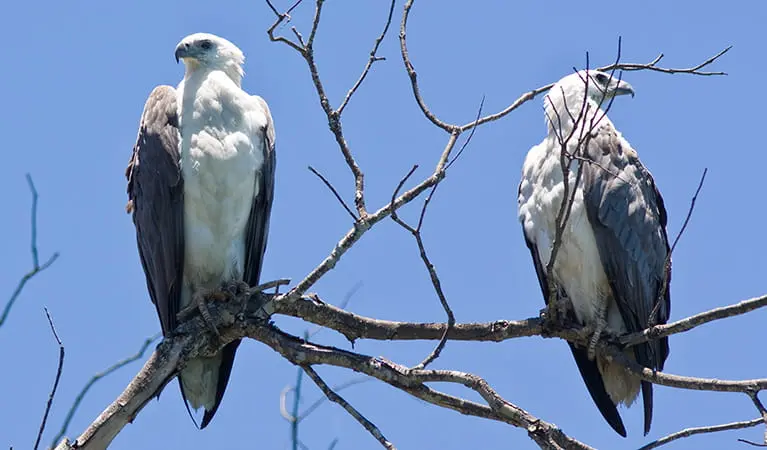
Their preference for habitats is often closely tied to food availability, primarily fish, which forms a significant part of their diet. The presence of large bodies of open water with abundant food sources is crucial for sustaining sea eagle populations.
Coastal Regions
Coastal regions serve as prime habitats for sea eagles, where the confluence of land and maritime ecosystems provides a buffet of food sources. Sea eagles, such as the Steller’s sea eagle and the white-bellied sea eagle, thrive in these biodiverse areas.
- Abundant Food Sources: Coastal waters are often rich in fish populations, including salmon and other prey that these eagles primarily target. They hunt both from trees along the shoreline and during aerial maneuvers over the water.
- Nesting and Roosting: The tall trees along coastlines serve as ideal nesting sites, offering security and a high vantage point for spotting potential prey. Additionally, such areas provide shelter from terrestrial predators during the vulnerable nesting season.
- Environmental Interactions: The unique dynamics at the interface of land and ocean create an intricate food web that supports various wildlife species. Sea eagles play a critical role as apex predators, maintaining the balance needed for a healthy ecosystem.
- Migration Corridors: Coastal habitats serve as vital migration corridors, allowing different eagle populations to interact, breed, and share resources throughout the year.
In summary, coastal regions are not only home to diverse wildlife but play a critical role in the survival and health of sea eagle populations worldwide.
Freshwater Ecosystems
Sea eagles also occupy freshwater ecosystems, where rivers, lakes, and wetlands provide an essential hunting ground. These habitats are often teeming with fish and other prey species, making them a classic hunting environment for various sea eagle species.
- Diverse Prey Availability: Freshwater ecosystems feature a variety of dietary options for sea eagles. In addition to fish, these areas host amphibians, reptiles, and small mammals all potential prey for resourceful hunters.
- Habitat Interconnectivity: Freshwater areas are often linked to coastal zones, allowing sea eagles to transition between different habitats as needed. They can hunt along rivers and return to nest in trees nearby, ensuring their need for adequate feeding areas.
- Breeding and Nesting: Freshwater habitats provide abundant nesting opportunities. The twisted branches along riverbanks and solid trees create secure platforms for rearing young. Wetlands also offer ample materials for constructing nests.
- Water Quality Indicators: As apex predators, the health of sea eagle populations can serve as indicators of freshwater ecosystem health. Their presence often reflects the viability of fish populations and overall habitat quality.
Through their adaptability, sea eagles successfully exploit these environments, showcasing their ecological significance and role in maintaining balance within freshwater ecosystems.
Nesting Sites
Nesting sites play a crucial role in determining the reproductive success of sea eagles. The choice of nesting locations often reflects a bird’s species and individual preferences, adapting to their unique environmental needs.
- High Vantage Points: Sea eagles prefer nesting in tall, sturdy trees or elevated cliffs, allowing them to observe surroundings for both potential threats and food sources. The height adds a layer of security against terrestrial predators.
- Nest Construction: Nests are typically constructed from large sticks and natural materials, often reused or added to by the breeding pair year after year. This behavior highlights their long-term bond as monogamous pairs, which tend to return to the same nesting site annually.
- Breeding Success Factors: The selection of proper nesting sites directly correlates with breeding success a nest placed high among protective branches provides safety for young eagles. The accessibility of water sources nearby promotes feeding and eases parental care responsibilities.
- Environmental Threats: Nesting sites are increasingly threatened by deforestation, human developments, and pollution. As habitat modifications intensify, preserving meaningful nesting areas is essential for sustaining healthy sea eagle populations.
In conclusion, nesting sites are vital for the life cycles of sea eagles, encapsulating the environmental adaptations necessary for the continued survival of these magnificent birds.
Feeding Behavior of Sea Eagles
Feeding behavior among sea eagles reflects their unique adaptations as apex predators. Hunting strategies, prey selection, and dietary preferences vary between species, showcasing their ability to thrive in diverse environments.
- Hunting Techniques: Sea eagles utilize impressive aerial skills to spot prey from great heights. They can dive at significant speeds often reaching 50 km/h when they identify a fish just below the water’s surface.
- Aggressive Opportunism: These birds showcase opportunistic feeding behaviors, regularly scavenging and stealing from other birds. While primarily fish eaters, they will adapt their diet based on seasonal availability and competition.
- Dietary Preferences: The primary diet of sea eagles consists of fish, but they may also target waterfowl, small mammals, and carrion. Opportunism highlights their flexibility, allowing them to exploit varying food sources under different environmental conditions.
- Social Interactions: Sea eagles often scavenge near other raptors, leading to complex social interactions. Such behavior can reflect competition for resources, ultimately influencing their feeding dynamics.
Through their diverse feeding behaviors, sea eagles play a vital role in the complexity of the ecosystems they inhabit, illustrating both resilience and adaptability in their pursuit of sustenance.
Hunting Techniques
Hunting techniques among sea eagles encompass a fascinating array of strategies that ensure their success in capturing prey. Each method exhibits the birds’ intelligence, agility, and innate hunting skills that enable them to thrive in their environments.
- Aerial Scouting: Sea eagles often soar at great heights while scanning the waters below for movement. This strategic advantage allows them to identify potential prey, observing fish near the water surface and striking with precision when opportunities present themselves.
- Perch Hunting: Many sea eagle species use tall trees or cliff edges as lookout points to wait patiently for prey. By remaining still and silent, they can catch fish or birds unaware, diving down swiftly to capture their quarry.
- Diving Technique: When hunting fish, these eagles exhibit remarkable diving skills, launching themselves from heights into the water, employing their curved talons to snatch the prey. The energy-efficient design of their wings allows for powerful strokes necessary during both soaring and diving.
- Collaborative Hunting: In some cases, sea eagles may coordinate with other birds. They may join forces with their species or other raptors, engaging in chemically made scavenging efforts to access larger or more difficult prey.
In summary, sea eagles showcase a remarkable array of hunting techniques that reflect their adaptive nature as apex predators, further emphasizing their integral roles within their ecosystems.
Prey Species
The diversity of prey species targeted by sea eagles showcases their adaptability and hunting prowess. Their diets significantly influence the ecosystems in which they reside, highlighting their roles as both hunters and scavengers.
- Fish Dominance: The primary prey for most sea eagle species is fish, which constitutes a significant portion of their diet. Fish targeted include salmon, trout, and other coastal species, reflecting ecological dependencies on rich habitats.
- Waterfowl and Birds: Sea eagles also hunt various bird species, particularly ducks and other waterfowl. They utilize stealth and speed to capture these prey while flying or by surprise diving, showcasing versatility in hunting techniques.
- Mammals and Reptiles: Although fish make up the bulk of their diet, sea eagles will opportunistically target small mammals and reptiles as well, utilizing their keen eyesight and impressive flight skills.
- Carrion Scavenging: In lean times, these eagles have been known to scavenge carrion or steal meals from other predatory birds, further illustrating their opportunistic dietary habits. This scavenging behavior often reinforces their role as nature’s clean-up crew.
Through a combination of hunting skill and adaptability, sea eagles maintain balanced ecosystems, regulating populations of various prey species and ensuring the richness of biodiversity is preserved.
Feeding Habits
The feeding habits of sea eagles, characterized by exploiting various prey and environments, speak to their adaptability as apex predators. Their relationship with the food chain showcases how they regulate prey populations and contribute to ecological health.
- Predominantly Piscivorous: Sea eagles are primarily fish eaters. Their feeding habits emphasize the importance of aquatic ecosystems, as producing healthy fish populations is necessary for sustaining their lives. This relationship makes them vital indicators of fish populations’ health.
- Carrion and Scavenging: In times of scarcity, sea eagles resort to scavenging, consuming carrion and opportunistically stealing from other birds. This flexibility allows them to survive when food resources are limited, demonstrating resilience in their feeding habits.
- Hunting Techniques: Their hunting techniques complement their feeding habits, often involving a combination of hunting from perches, soaring high to spot prey, and diving swiftly when opportunities arise. This diversity ensures their success as hunters.
- Social Dynamics: The feeding dynamics of sea eagles vary depending on environmental conditions, seasonal changes, and interactions with other raptors. Their adaptability to these social dynamics reveals a complex interplay that further reflects in their foraging strategies.
By understanding the feeding habits of sea eagles, we gain insights into their ecological roles, the health of the ecosystems they inhabit, and their importance in maintaining biodiversity.
Conservation Status of Sea Eagles
Sea eagles face numerous challenges in today’s rapidly changing world. Due to their status as apex predators, these birds often reflect the health of their environments, making their conservation vital for sustaining biodiversity. Different sea eagle species have unique conservation statuses, mostly influenced by human activities, habitat destruction, and pollution.
- Vulnerable Species: Steller’s sea eagle (Haliaeetus pelagicus) is classified as Vulnerable by the IUCN Red List, facing declining populations due to habitat loss, industrial pollution, and overfishing. Conservation efforts are necessary to safeguard its breeding and wintering habitats.
- Near Threatened and Least Concern: The white-tailed eagle (Haliaeetus albicilla) is generally classified as Least Concern globally but has specific populations in various regions classified as Near Threatened due to habitat degradation.
- Public Awareness Initiatives: Raising awareness about sea eagle conservation is essential for their survival. Public efforts in education and community involvement can facilitate programs promoting sustainable practices and habitat preservation.
- International Collaborations: International cooperation is critical, especially for migratory sea eagle species. Collaborative conservation initiatives, partnerships, and research can develop effective strategies to monitor populations and address threats.
Understanding the conservation status of sea eagles not only enables prioritization of protective measures but also underscores the need for dedicated efforts to maintain healthy ecosystems for generations to come.
Endangered Species
Some sea eagle populations face critical conservation challenges, largely driven by habitat loss, human interference, and climate change. Protected status varies significantly between species, largely influenced by local conservation efforts and global environmental changes.
- Vulnerability Factors: The Steller’s sea eagle is currently classified as Vulnerable, with its population estimated to be under 5,000 individuals. Habitat destruction and reduced fish availability contribute significantly to these declining numbers.
- Strategies for Recovery: Conservation strategies for vulnerable species include habitat restoration, protection of breeding sites, and regulations on fishing practices to ensure adequate food sources for these birds.
- Laws and Regulations: Remote regions where sea eagles thrive are often underbitted for protection. Strengthening laws can mitigate poaching and habitat destruction, enhancing the effectiveness of existing conservation measures.
- Public Engagement and Awareness: Engaging communities and stakeholders is vital, fostering collective efforts to protect endangered sea eagle populations. International organizations often lead educational campaigns aiming to support conservation initiatives.
Addressing the threats to endangered sea eagle populations is crucial for ensuring the survival of these magnificent birds and the balance of their ecosystems. Collective efforts can enhance awareness and fuel momentum toward sustainable conservation.
Conservation Efforts
Conservation efforts for sea eagles encapsulate a wide range of initiatives aimed at protecting their habitats and promoting coexistence with human populations. These programs focus on key aspects that support recovery and sustainability.
- Habitat Protection: Establishing protected areas that safeguard breeding sites and food sources is essential. Conservation organizations work to create initiatives that set aside habitats critical for maintaining the ecological balance necessary for sea eagles.
- Public Awareness Campaigns: Education and community engagement play a crucial role in conservation. Initiatives that raise awareness about the ecological importance of sea eagles can foster support for protective measures, encouraging individuals to participate in conservation efforts.
- Monitoring and Research Initiatives: Ongoing research and monitoring programs allow conservationists to track eagle populations, gather data on behavior, and assess habitat health. Such research underpins effective management strategies.
- Regulatory Frameworks: Implementing strong regulations related to pollution, resource management, and land development protects vital habitats. Collaboration with various stakeholders, including government agencies, facilitates successful enforcement.
Overall, coordinated conservation efforts are fundamental for ensuring the long-term survival of sea eagles, their habitats, and the unique ecosystems they inhabit.
Threats to Population
The population of sea eagles faces several threats primarily linked to human activities and environmental changes. Understanding these threats is crucial for informing effective conservation strategies aimed at ensuring the survival of these majestic birds.
- Habitat Loss: One of the primary threats to sea eagle populations is the loss of habitat due to urban development, agriculture, and industrial activities. Deforestation and wetland drainage significantly undermine nesting and feeding sites.
- Pollution: Environmental contaminants, such as pesticides and heavy metals, pose severe health risks to sea eagles. These pollutants often accumulate in the food chain, impacting reproductive success, survival, and overall population health.
- Climate Change: Climate change alters ecosystems, affecting prey availability and nesting conditions for sea eagles. Changing weather patterns can disrupt migratory habits, leading to challenges in finding suitable habitats.
- Human-Wildlife Conflict: Increasing interactions between humans and sea eagles through expansion into their habitats can lead to conflicts. Negative perceptions toward these birds can result in unlawful hunting or nest destruction.
Effective conservation strategies must address these population threats, focusing on mitigation, habitat protection, and promoting coexistence with human communities.
Cultural Significance of Sea Eagles
Throughout history, sea eagles have captivated human hearts, symbolizing freedom, power, and resilience across varied cultures. Their impressive stature and hunting prowess have positioned them as revered creatures within many societies, echoing across folklore and traditions.
- Symbolism Across Cultures: Sea eagles, like the bald eagle, emblemize strength and independence in the United States. Their representation fosters national pride, aligning with ideals of freedom and heroism.
- Indigenous Beliefs: Various indigenous cultures hold sea eagles in high regard. They are often characterized in stories that attribute spiritual qualities to their presence, symbolizing guidance and a connection between the material and spiritual worlds.
- Literature and Art: The awe surrounding sea eagles influences their representation in literature and art. From ancient mythology to contemporary portrayals, these magnificent birds often serve as symbols of courage, heroism, and resilience.
- Conservation Narratives: The cultural significance of sea eagles strengthens conservation narratives, emphasizing their role as ecological indicators. Celebrating their natural history encourages communities to participate in their preservation.
The cultural significance of sea eagles enriches our engagement with nature, emphasizing the importance of protecting these majestic birds and the ecosystems that sustain them.
Symbolism in Different Cultures
Across various cultures and civilizations, sea eagles have held profound symbolic significance that mirrors the unique values and beliefs of those societies. Their majestic presence often embodies concepts of power, wisdom, and resilience.
- Native American Symbolism: In Native American traditions, the bald eagle holds spiritual significance, acting as a messenger between humans and the divine. The eagle is a revered creature, symbolizing courage, honor, and freedom.
- Greek and Roman Mythology: In ancient Greece, the eagle was associated with Zeus, representing divine authority and power. Roman culture adopted similar beliefs, using the eagle as a symbol of military might and triumph.
- Celtic Beliefs: Within Celtic mythology, eagles epitomize wisdom, foresight, and the bond to ancestral spirits. They are viewed as guides, offering insights into life’s mysteries and mysteries of the universe.
- Global Perspectives: Beyond indigenous views, many cultures globally embrace eagles, seeing them as emblems of liberty, vision, and nobility. Their soaring flight inspires generations, reflecting the inherent desire for freedom in humanity.
Through these rich symbolisms, sea eagles serve as a bridge between nature and humanity, underscoring our collective aspirations for hope, strength, and survival.
Sea Eagles in Mythology
Mythologies worldwide showcase sea eagles as potent symbols with significant roles in narratives that frame humanity’s connection with the natural world. Their depiction frequently highlights values such as strength, wisdom, and freedom, echoing through ancient stories.
- Gods and Messengers: In Greek mythology, eagles signify divine authority, often associated with Zeus as his messenger. This portrayal reinforces the idea of the eagle as a powerful figure, linking mortals with the divine.
- Celtic Tales: Eagles appear prominently in Celtic folklore, embodying wisdom and higher knowledge. Celtic legends often associate them with the divine, as they bridge gaps between the earthly realm and spiritual dimensions.
- Indigenous Legends: In various Native American cultures, stories recounting eagle encounters emphasize themes of vision, bravery, and guidance. The eagle’s role as a guardian or messenger enriches its symbolic existence in these narratives.
- Global Narratives: Across civilizations, eagles represent transformative journeys, often serving as totems in stories about personal growth, resilience, and power. Their majestic flight inspires both reverence and aspiration.
Through their remarkable interpretations in mythology, sea eagles emerge as more than mere creatures of the wild; they embody the profound connections between humans, nature, and the cosmos.
Popular Representation in Media
The representation of sea eagles in various media forms reflects societal values and environmental concerns that resonate with audiences globally. Films, documentaries, literature, and art portray these majestic birds, often amplifying themes of conservation and ecological significance.
- Documentaries: Nature documentaries often highlight the extraordinary behaviors of sea eagles, educating audiences about their role as apex predators. These programs illuminate their hunting techniques and habitats, fostering appreciation for their ecological importance.
- Literary Symbolism: Sea eagles appear in literature as potent symbols of power and nobility. Their representation evokes admiration, serving as metaphors for freedom, perseverance, and harmony with nature.
- Cultural Art: Artistic representations of sea eagles across civilizations underscore their cultural significance. From paintings to sculptures, these majestic birds frequently symbolize resilience, beauty, and the intricate relationships woven into the tapestry of life.
- Public Awareness Campaigns: Media narratives are pivotal in fostering public awareness about the importance of sea eagle conservation. Campaigns reach diverse audiences, engaging individuals in discussions regarding environmental stewardship.
In conclusion, the representation of sea eagles in media encapsulates the interplay between culture and wildlife, emphasizing the importance of these magnificent birds within ecological frameworks while promoting their conservation.
Research and Studies on Sea Eagles
Research surrounding sea eagles has grown increasingly critical in developing effective conservation strategies and understanding their ecological roles. Numerous studies contribute to expanding our knowledge of these birds, forming a foundation for future efforts.
Recent Findings on Behavior
Recent behavioral studies have unraveled intriguing aspects of sea eagle populations, particularly concerning their hunting habits and breeding strategies. These studies enhance our understanding of their adaptability and resilience amid changing environments.
- Hunting Techniques: Research has shown that sea eagles exhibit diverse hunting techniques, often utilizing different strategies based on prey availability and environmental conditions. Their adaptability underscores their intelligence in foraging and gathering resources effectively.
- Nest Site Selection: Investigations into nesting site preferences reveal that sea eagles select locations based on environmental quality, food accessibility, and safety from predators. Understanding these preferences aids in identifying vital habitats for protection.
- Movement Patterns: GPS tracking studies have demonstrated significant variations in movement patterns, showcasing how sea eagles adapt their behaviors to seasonal changes and food availability, offering insights into their life cycles and ecological requirements.
- Social Dynamics: Studies focusing on social interactions among sea eagles have revealed complex relationships where competition for resources often influences feeding behaviors, breeding success, and territorial dynamics.
By examining recent behavioral findings, conservationists gain critical insights that guide future research, policy formation, and habitat protection efforts.
Habitat Preservation Studies
Habitat preservation studies for sea eagles serve as a vital aspect of ecological research, examining how human activities and environmental changes impact these majestic birds. Understanding their habitat requirements is essential for promoting effective conservation strategies.
- Ecological Assessments: A range of ecological assessments highlights the importance of preserving suitable nesting, roosting, and feeding habitats. Protection of wetlands, coastal areas, and forested zones is critical for maintaining sea eagle populations.
- Impact Analysis: Studies have evaluated the impacts of human activities, such as agriculture and urbanization, on the nesting success and overall health of sea eagle populations. Such analyses assist policy-making by identifying critical areas for protection.
- Habitat Restoration: Conservation programs focus on habitat restoration efforts that aim to revive ecosystems degraded by anthropogenic influence. These initiatives enhance the natural resources available to sea eagles.
- Community Engagement: Active community engagement within habitat preservation efforts fosters collaboration between local groups and conservation organizations. This collaboration emphasizes the shared responsibility in preserving the ecological integrity of sea eagle habitats.
Continued research into habitat preservation plays a critical role in ensuring the survival of sea eagles, guiding efforts to create sustainable environments in which they can thrive.
Population Monitoring Initiatives
Population monitoring initiatives are paramount in understanding the dynamics and conservation needs of sea eagle species. These efforts encompass various research methods aimed at tracking population health and assessing threats to their survival.
- Direct Observation and Surveys: Conducting direct observations and surveys aids researchers in estimating population sizes, breeding success rates, and territorial behaviors. Comparing data over specific timeframes helps identify trends and inform conservation actions.
- Satellite Tracking: Utilizing satellite tracking technology allows scientists to monitor migratory patterns, habitat utilization, and seasonal behavior changes across regional and international scales.
- Long-term Studies: Longitudinal studies that examine population changes over extended periods foster insight into reproductive success, mortality rates, and resilience against environmental changes.
- Collaboration with Local Communities: Collaborative efforts with local communities enhance data collection while increasing public awareness. Residents often become citizen scientists, contributing valuable observations and insight into their local sea eagle populations.
Overall, population monitoring initiatives are essential for gauging the health of sea eagle species and crafting strategic conservation responses necessary for their continued survival.
Comparative Analysis of Sea Eagles
A comparative analysis of sea eagles and other birds of prey reveals critical insights into their ecological roles, adaptations, and interactions within their environments.
Sea Eagles vs. Other Birds of Prey
In contrast to other raptors, sea eagles stand out due to their specialized hunting methods, adaptations, and distinct ecological roles. Understanding these differences highlights the diverse nature of these exciting birds.
- Size and Characteristics: Sea eagles hold a larger size compared to many raptors, often wielding significant wingspans that aid in soaring over vast territories. Their distinguished features, like hooked beaks and strong talons, optimize their hunting capabilities, particularly for fish.
- Dietary Preferences: While most sea eagles are piscivorous, various other birds of prey display more generalized diets, targeting small mammals or birds instead. The specialization of sea eagles emphasizes their importance in regulating fish populations within aquatic ecosystems.
- Hunting Strategies: Sea eagles primarily employ aerial hunting and perch hunting techniques, contrasting with smaller raptors that may rely more heavily on stealth and ambush tactics. Their dynamic hunting styles reflect adaptations that sustain their nutritional requirements.
- Ecological Role: Sea eagles significantly impact the health of aquatic ecosystems. Their predation not only controls fish populations but also facilitates nutrient cycling through scavenging. In contrast, smaller raptors also play vital roles within terrestrial ecosystems, targeting various prey.
In summary, a comparative analysis of sea eagles versus other birds of prey illuminates the distinctive adaptations and ecological roles that make these raptors integral components of their respective ecosystems.
Ecological Role in the Food Chain
The ecological role of sea eagles in the food chain reflects their position as apex predators, playing a pivotal role in maintaining balance within their environments.
- Predator-Prey Relationships: As apex predators, sea eagles help regulate populations of fish, birds, and other small mammals, maintaining a healthy equilibrium within ecosystems. Their predation prevents overpopulation, ensuring biodiversity within their habitats.
- Nutrient Recycling: Sea eagles contribute to nutrient recycling as scavengers consuming carrion and dead animals in addition to hunting live prey. This behavior ensures that nutrients from decomposing matter are returned to the ecosystem, supporting the health of plant and animal communities.
- Indicators of Ecosystem Health: The presence and health of sea eagle populations can signal the overall health of aquatic and terrestrial ecosystems. Monitoring their populations can provide insights into the health of fish stocks, pollution levels, and habitat quality.
- Societal Influence: As cultural symbols, sea eagles inspire conservation efforts meant to protect not just the species but also their habitats and the interconnected web of life within ecosystems. Their ecological importance transcends their physical presence, enhancing public awareness and promoting action.
By recognizing the ecological role sea eagles play in the food chain, we can better understand the importance of their conservation and the stability of the ecosystems they inhabit.
Adaptations for Survival
The adaptations for survival in sea eagles encompass a remarkable array of physical, behavioral, and ecological traits that enable them to thrive in diverse environments.
- Physiological Adaptations: Sea eagles possess powerful musculature and large wings that facilitate efficient flying and hunting. Their keen eyesight, reputedly six to eight times sharper than that of humans, allows them to spot prey from long distances.
- Behavioral Flexibility: Highly adaptable, sea eagles employ varied hunting techniques based on environmental conditions and available resources. They display opportunistic feeding behaviors, adjusting their diets according to seasonal changes.
- Nesting Appropriately: The choice of nesting locations reflects their strategic behavior, selecting high trees or cliffs to protect their young from terrestrial predators. This nesting strategy contributes to their breeding success.
- Response to Environmental Change: Sea eagles demonstrate remarkable resilience when faced with environmental stressors, adapting their behaviors and foraging patterns to maintain their populations. Monitoring responses to habitat changes informs conservation strategies.
In conclusion, the adaptations of sea eagles reflect their remarkable abilities to navigate diverse ecosystems as apex predators. The nuances of their survival strategies emphasize the need for preserving their habitats and ensuring their future.
In summation, sea eagles are significant not only for their ecological importance but also for their cultural symbolism and role as indicators of environmental health. Understanding their species diversity, habitats, behaviors, and the threats they face is vital for developing effective conservation strategies. The majesty of sea eagles inspires admiration, represents hope for wildlife conservation, and underscores the importance of protecting our extraordinary natural world.


